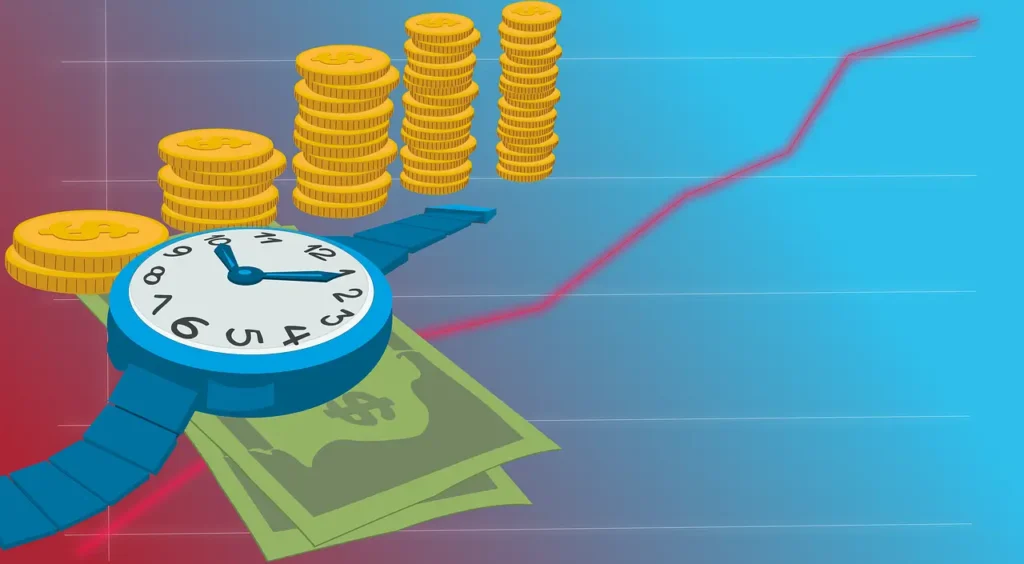Savings accounts are essential tools for managing personal finances. They provide a safe place to store money, earn interest, and organize financial goals. A common question people often ask is, “How many savings accounts can I have?” The answer is not only straightforward but also strategically important for building a better financial future. This guide walks you through the concept, benefits, potential drawbacks, and best practices of owning multiple savings accounts.
Table of Contents
Understanding Savings Accounts and Their Purpose
A savings account is a type of deposit account offered by banks and credit unions that allows you to store money securely while earning a small amount of interest. Unlike checking accounts, savings accounts are primarily designed for saving rather than frequent transactions.
People often use savings accounts to build an emergency fund, save for vacations, manage taxes, or work toward specific financial goals like buying a home or funding education. But as financial planning becomes more advanced, many wonder whether one account is enough to meet all these needs.
Can You Legally Have Multiple Savings Accounts?

Yes, you can legally have as many savings accounts as you want. There is no federal or state law that limits the number of savings accounts an individual can open. Banks and credit unions also do not impose restrictions on the quantity of accounts you hold. You can have multiple accounts at the same bank, or spread them across different institutions.
However, while there are no legal limits, having multiple accounts comes with certain administrative and strategic responsibilities that you must manage effectively.
Why Would Someone Want Multiple Savings Accounts?
Having more than one savings account can be a smart financial move, especially if you have various financial goals. Here are some reasons why individuals open and maintain multiple accounts:
1. Financial Goal Segmentation
By opening separate savings accounts for different financial objectives, you gain more clarity and discipline. For example, you can have one account for your emergency fund, another for travel, one for home maintenance, and another for long-term goals like a wedding or car purchase. Seeing your progress for each goal in a dedicated account can be more motivating than lumping all your money into one place.
2. Budgeting and Expense Planning
Multiple savings accounts can serve as a digital envelope system. Each account acts as a “jar” for specific future expenses. When income arrives, you can distribute it across your accounts, making it easier to manage your money and reduce overspending.
3. Maximizing Interest Rates
Different banks offer varying interest rates, promotions, and benefits. You might want to open an account at an online bank for a higher annual percentage yield (APY), while keeping another account at your local bank for convenience. This approach allows you to optimize your earnings without sacrificing accessibility.
4. Insurance and Security Considerations
If you have a significant amount of savings, opening multiple accounts at different institutions helps spread out your funds. In the U.S., the FDIC insures up to $250,000 per depositor per bank. If your total savings exceed that limit, you can distribute your money to stay within the insured range.
How Many Savings Accounts Can I Have Without Complicating My Finances?

While technically unlimited, managing too many savings accounts can become burdensome. It’s important to balance strategy with simplicity. So, how many savings accounts can I have before it becomes counterproductive?
The ideal number varies by individual, but financial experts often suggest between three and five accounts for optimal management. Each account should serve a distinct purpose, and you should be able to monitor them without confusion.
When Fewer Accounts Make More Sense
If you struggle to manage digital tools, forget login credentials easily, or lack the discipline to track your balances regularly, fewer accounts might be better. In such cases, you could use one account with tracking apps or budgeting software that labels and monitors funds within that single account.
When More Accounts Work to Your Advantage
On the other hand, if you are a detail-oriented person who enjoys automating your finances, then having six or more accounts may suit you. As long as you can avoid unnecessary fees and keep track of all accounts effectively, there is no upper limit that inherently causes problems.
Potential Drawbacks of Multiple Savings Accounts
Although the benefits are appealing, there are some disadvantages to be aware of when opening and maintaining several savings accounts:
1. Minimum Balance Requirements and Fees
Some banks require a minimum balance to avoid maintenance fees. If you divide your savings among many accounts and each one falls below the threshold, you may incur penalties that reduce your earnings.
2. Inactivity and Dormant Account Policies
If you don’t use or check a savings account for an extended period, your bank may classify it as dormant. This could result in fees or even the escheatment of funds to the state. Be sure to regularly monitor all your accounts.
3. Complexity in Financial Planning
Too many accounts can lead to fragmented finances, making it harder to get a clear picture of your overall savings. If you’re juggling accounts across multiple banks, logging into various platforms to update your budget may become a chore.
Tips for Managing Multiple Savings Accounts Effectively
To avoid the drawbacks while still enjoying the benefits, consider the following strategies:
- Use online banks or neobanks with no maintenance fees or minimum balance requirements.
- Automate your transfers according to your paycheck schedule.
- Label each account clearly with its purpose.
- Use personal finance apps that aggregate all your accounts in one dashboard.
- Periodically review your account structure to ensure it’s still aligned with your goals.
Frequently Asked Questions
1. Can you have 2 savings accounts?
Yes, you can have two savings accounts, or more if you choose. There is no legal limit on the number of savings accounts you can open. Many people keep separate accounts for different purposes, such as one for emergencies and another for travel or significant expenditures. Having two or more savings accounts is sometimes recommended for better financial organization as long as they can be managed responsibly and without incurring account fees.
2. Do multiple savings accounts affect your credit score?
No, creating several savings accounts will not affect your credit score. Credit scores are calculated using credit activities, such as loans and credit card usage, rather than bank accounts like savings or checking. Consider applying for a savings account at a financial institution that conducts a hard credit check (which is uncommon). In that instance, it may result in a modest, temporary drop in your score, but this is unusual for basic savings accounts.
3. Is there a penalty for having too many savings accounts?
There is no penalty for simply having multiple savings accounts. However, penalties or fees may arise if you don’t meet minimum balance requirements if the accounts become dormant due to inactivity, or if you exceed transaction limits set by the bank. It’s also important to stay organized so you don’t forget about accounts, miss updates, or incur unexpected charges.
4. Can I open savings accounts at different banks?
Yes, you can open savings accounts at as many banks as you’d like. Many people do this to take advantage of higher interest rates, promotional offers, or to spread their deposits across institutions for better FDIC insurance coverage. Just make sure you track your balances and account details, as managing accounts across multiple banks can become complex without good organization.
5. How should I name or label multiple savings accounts?
If your bank allows you to nickname or label your accounts, it’s smart to do so according to your savings goals. For example, you might name them “Emergency Fund,” “Vacation Savings,” or “Car Down Payment.” Clear labeling helps you stay motivated and makes it easier to track progress toward each goal. Many online banking platforms offer this feature, and it’s especially helpful when you have three or more accounts.
The Final Word: Should You Open Multiple Savings Accounts?
Finally, the decision on how many savings accounts I can have is determined by my own goals, spending habits, and level of financial organization. There is no one-size-fits-all solution. Many people can get by with two or three accounts, but others may want a more segmented approach.
The most important thing is that your accounts keep you motivated, organized, and financially stable. Multiple accounts are well worth the investment if they help you achieve your goals more quickly and with a greater sense of control. Simplify your arrangement, though, if they start to cause anxiety or confusion.
As with any financial decision, balance is key. Your savings structure should support your lifestyle, not complicate it.

